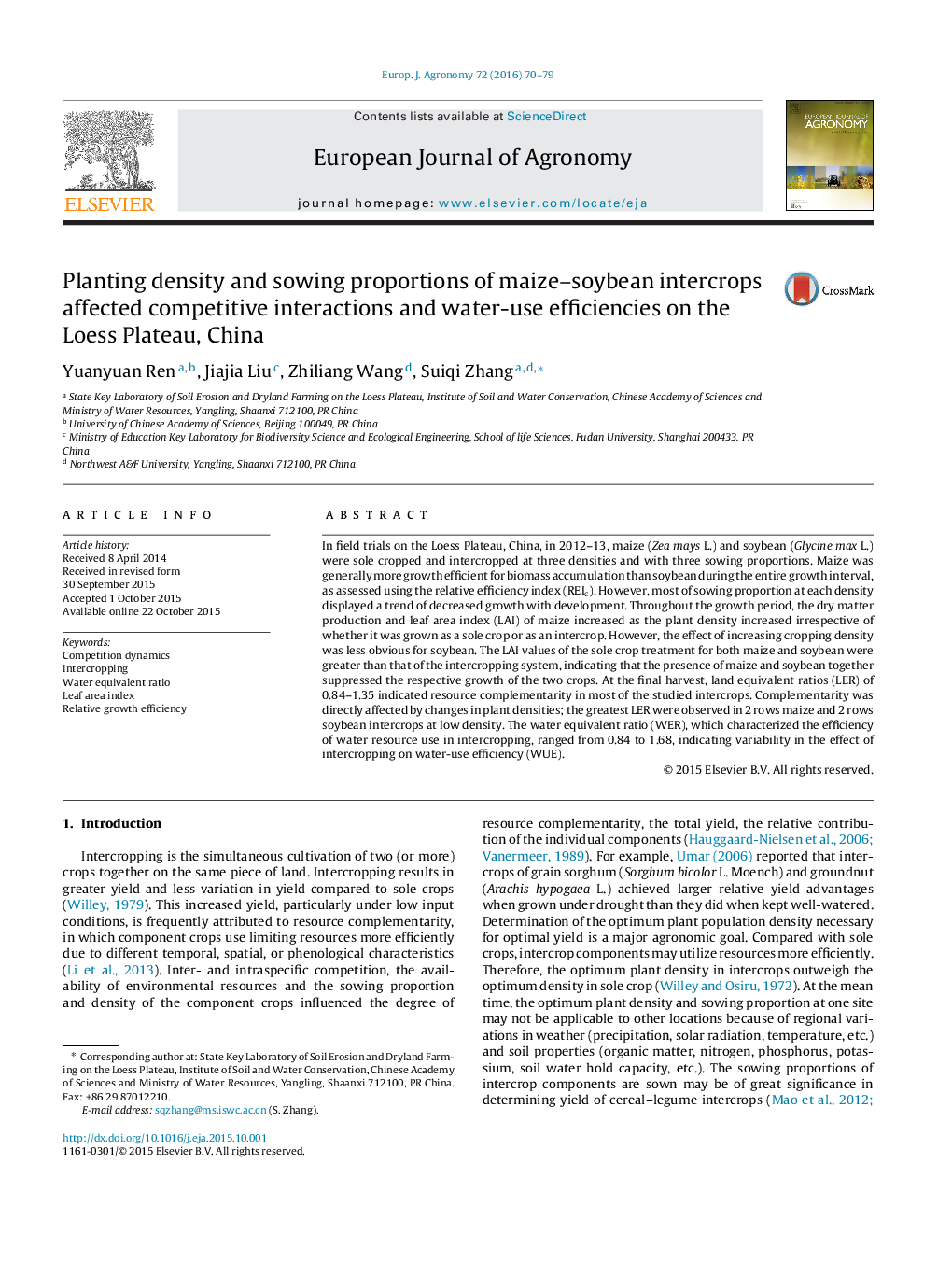| کد مقاله | کد نشریه | سال انتشار | مقاله انگلیسی | نسخه تمام متن |
|---|---|---|---|---|
| 4508712 | 1624453 | 2016 | 10 صفحه PDF | دانلود رایگان |
• Maize and soybean were intercropped at three densities and three sowing proportions.
• Maize was more growth efficient than soybean over growth period in intercrops.
• Land equivalent ratio of 2:2 at low density was the greatest in intercrop.
• Water equivalent ratio of 4:2 at low density was the greatest in intercrop.
In field trials on the Loess Plateau, China, in 2012–13, maize (Zea mays L.) and soybean (Glycine max L.) were sole cropped and intercropped at three densities and with three sowing proportions. Maize was generally more growth efficient for biomass accumulation than soybean during the entire growth interval, as assessed using the relative efficiency index (REIc). However, most of sowing proportion at each density displayed a trend of decreased growth with development. Throughout the growth period, the dry matter production and leaf area index (LAI) of maize increased as the plant density increased irrespective of whether it was grown as a sole crop or as an intercrop. However, the effect of increasing cropping density was less obvious for soybean. The LAI values of the sole crop treatment for both maize and soybean were greater than that of the intercropping system, indicating that the presence of maize and soybean together suppressed the respective growth of the two crops. At the final harvest, land equivalent ratios (LER) of 0.84–1.35 indicated resource complementarity in most of the studied intercrops. Complementarity was directly affected by changes in plant densities; the greatest LER were observed in 2 rows maize and 2 rows soybean intercrops at low density. The water equivalent ratio (WER), which characterized the efficiency of water resource use in intercropping, ranged from 0.84 to 1.68, indicating variability in the effect of intercropping on water-use efficiency (WUE).
Journal: European Journal of Agronomy - Volume 72, January 2016, Pages 70–79
